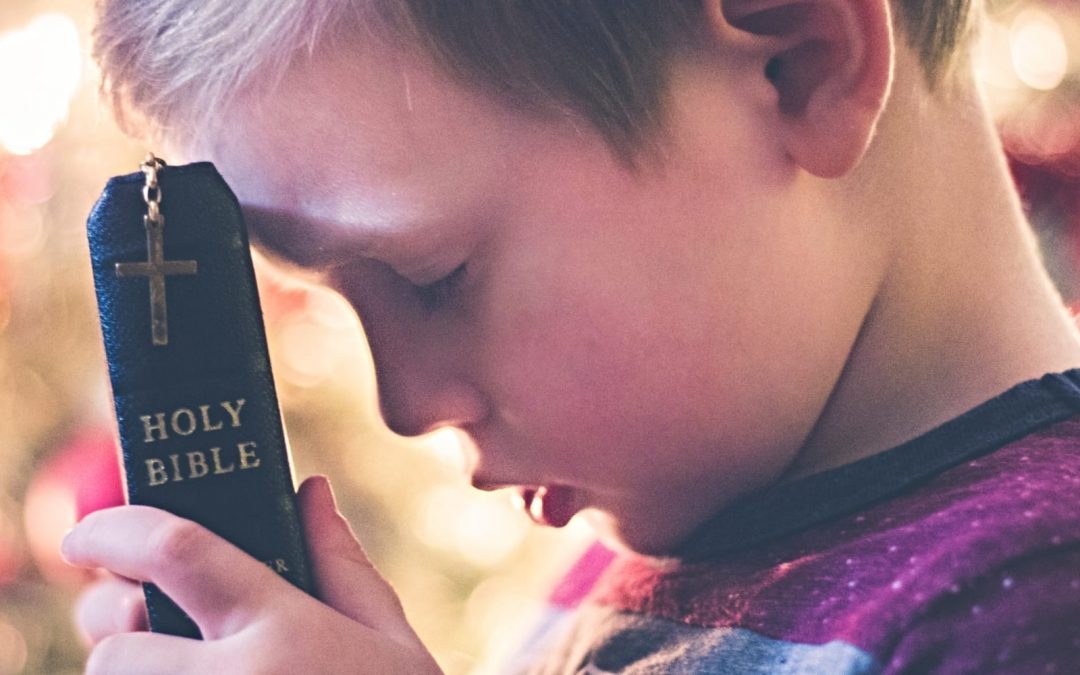How can we bridge the gap between church (the place) and church (the body of Christ) as we disciple our kids in our homes?
A few years ago, I had the chance to sit in on a class with my husband and some of our seminary friends.
The class discussion revolved around how liturgical practices in the church could be used to address current themes, such as nationalism, consumerism, the oversexualization of society and so on.
It was a great discussion. However, as the dialogue continued, it became increasingly clear that the church has limited influence in speaking into these areas.
In fact, it became increasingly clear that if the message was going to be heard, it was going to need to come from parents and caregivers in the context of the home.
But how? How can we take liturgical and sacramental practices like communion and baptism and put them in the context of the home while relating them to the themes and challenges of the culture today?
How can we as ministers give parents “easy wins” – simple ways to connect Sunday to Monday, so that the home continues the conversation of church?
And how can we, as parents, use these beautiful moments that connect us to the church across time and space in our homes to remind our family we are part of something bigger?
We need to think bigger. We need to look at this whole idea of having one conversation in multiple locations so that when we are in church on Sunday, what we are talking about, and what we are doing, doesn’t seem new or different or foreign.
Instead, when we walk into church, it seems familiar and natural, a continuation of the conversation.
Like with communion: What if we gave parents activities to explain communion to their kids at home before their kids take communion at church?
What if, after Communion Sunday, we give them a few conversation starters to share with their kids about how communion speaks to consumerism and materialism (not with those words but with that heart)?
What if we created roundtable discussions for parents to come to at church, not when their kids are 13 and in the middle of the pangs of puberty, but when they have infants and are preparing for this whole parenting thing? Then, at those tables, we took communion and talked about how we can live out this practice in our homes through sacrificial living and experiencing God’s presence?
And how about baptism? What if the words spoken, the commitment of the church to walk alongside the child and family at baptism or dedication (depending on your tradition) were given to parents to take home and review with their kids on a regular basis? Maybe even framed and signed by the pastor and members of the church?
What if we offered remember-your-baptism services and encouraged families to talk about their baptisms at home before they come to church so that baptism was more than a one-time event but a continual reminder of identity in Christ and as a member of the church?
A lot of “what ifs?” in all of that, but imagine if those “what ifs?” became easy wins for parents and caregivers to have intentional faith conversations with their children and youth when they rise, when they lie down, when they sit at home and when they walk along the road.
Here are some easy wins for communion:
At our church one Valentine’s Day, we created little “take-home communion kits” for families that included a short liturgy, the elements of grape juice and bread that were blessed by our pastor, and a little lesson titled “the Greatest Valentine Ever” (Jesus).
Families were able to celebrate together with a lesson that connected to the holiday of Valentine’s Day and reminded them of where True Love is really found. Need elements? Click here for what we used.
How do you talk about communion with youth? Here’s an article that makes talking about communion as easy as talking about eating dinner, something all kids and youth understand.
This is a great way to talk about communion as community, literally “communing” with God and the whole family of God. And this conversation can be had over dinner, also known as “when we sit at home.”
“Creative Communion,” a book by Margaret Withers and Tim Sledge, actually has six sessions around different foods and snacks that help open the discussion with kids about different aspects of communion, such as gathering, confession, gospel reading, offering, communion and dismissal.
It’s a helpful approach using food kids love (like pizza) to have an ongoing conversation about the sacrament of Eucharist. For more ideas and more about the book, click here.
Here are a few easy wins for baptism:
Many church traditions offer the opportunity to “remember your baptism” as part of their regular service.
This can easily be done by the family in the home, and parents can remember aloud with their children their own baptisms and what it means to be a member of the body of Christ.
Simply use water to pour over one’s hands or touch to one’s head and remember together.
Check out this booklet from one church that gives baptism anniversary activities for the parents and children to do at home and remember together their baptisms.
Regardless of your church’s baptismal tradition, one thing we all agree on is that baptism invites us into the community of faith, into the church, the body of Christ.
In an age where belonging and identity are often questioned, baptism gives us both.
For parents, this can be a good way to talk to their kids when they question who they are and where they belong. Baptism brings us back to that place.
Here are some links on ways to spark or have that conversation at home:
- Family Game Night – Belonging to the Body of Christ
- Members of One Body – This simple lesson has fun games for kids that use regular household items like a puzzle and spaghetti noodles.
- What is the Church? – This helpful video for kids explains that church is the people of God, and there are helpful questions at the end for the family to talk about together.
Discipleship at home doesn’t have to be a scary thing; it is as simple as inviting Christ into the spaces we inhabit daily.
As ministers, we can help families discover Christ in their homes as they sit and walk and rise and lie down, and as parents we can capture the moments to discover Jesus is with us every day in every way.
Editor’s note: A version of this article first appeared on Embree’s website, Refocus Ministry. It is used with permission.
A church planter with Plowshares Brethren in Christ in Lexington, Kentucky, she is a graduate of Wesley Seminary with a Master of Arts degree in ministry focusing on family, youth and children’s ministry.


